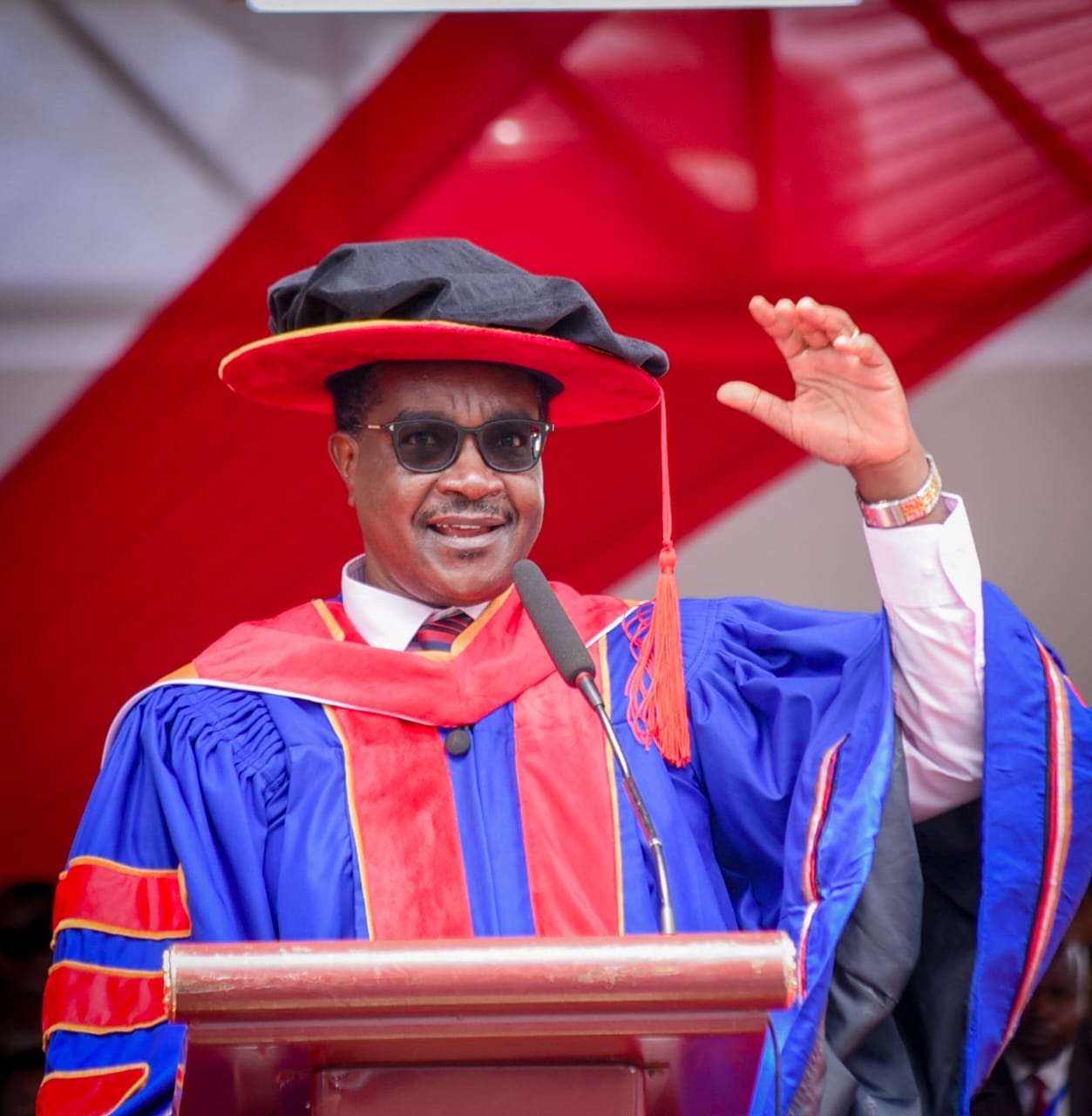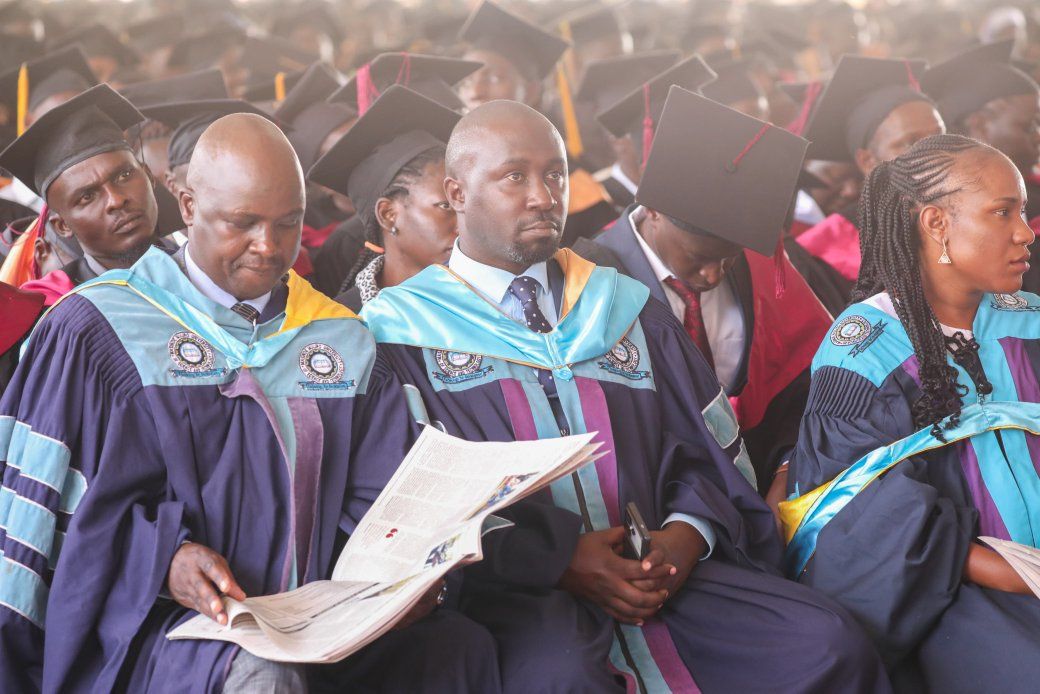By Education News Reporter
Grade 6 Kenya Primary School Education Assessment (KPSEA) will be conducted in a similar way as the Kenya Certificate of Primary Education (KCPE).
According to the Kenya National Examination Council (KNEC), the summative assessment whose rehearsal was on November 25, 2022 and will run from November 28-30, 2022 will be in form of multiple choices just like KCPE whereby learners will be given personalized Optical Mark Recognition (OMR) answer sheets.
In a briefing and sensitization for Teachers Service Commission (TSC) Directors at a stakeholders meeting on administration of examinations held on October 14, 2022; KNEC Chief Executive Officer (CEO) Dr. David Njeng’ere stated that the council will upload samples of OMR answer sheets for both KPSEA and KCPE in its portal for head teachers to download them for candidates to practice shading.
“For conduct of KPSEA, the summative assessment will be in form of multiple choices just like KCPE. Learners will be given personalized OMR answer sheets,” said Njeng’ere.
He added: “KNEC will upload samples of OMR answer sheets for KPSEA and KCPE for schools to download and use to practice shading. Once downloaded, the head teacher should ensure all their candidates are able to shade as expected.”
The KNEC boss has also instructed that any school with candidates who disappeared from school after registration should send the list of the learners in excel format to KNEC indicating the assessment number of the learners, scores in School Based Assessment (SBA) and the religious options the learner had chosen.
KPSEA will be a combination of the learners’ scores attained from the SBA administered at Grade 4, 5 and 6; and National summative assessment to be administered this November 2022.
The SBAs for each of the three Grades will constitute 20 per cent which will cumulatively account for 60 per cent of scores to be used in reporting as learners’ transit to JSS, with KNEC having already administered SBAs to the 2022 Grade 6 cohort at Grade 4 in 2020 and at Grade 5 in 2021.
At the end of Grade 6, KNEC will administer a summative assessment to all the 2022 Grade 6 learners which will contribute 40 per cent of a learner’s score as they transit to JSS. Here, KNEC will assess the thirteen (13) subjects offered at Upper Primary level using five (5) papers.
They include; Mathematics, English Language, Kiswahili or KSL; Integrated Science which combines 4 subjects of Science and Technology, Agriculture, Home Science, and Physical and Health Education; and Creative Arts and Social Studies which also combines 4 subjects of Social Studies, Religious Education (Christian, Islamic and Hindu Religious Education), Art and Craft and Music.
KNEC earlier maintained that there will be no transfer of learners at Grade 6 adding that their transfer shall be done by the Sub County Director of Education and will be allowed to take place at Grade 3, 4 and 5 and all the four levels of the Stage-Based Curriculum Pathway.
Each of the five (5) papers will be scored out of 100 per cent while the overall score will be reported as a summation of the scores in the five papers and will be out of 500 marks; thereafter leaners will be issued with a Transition Report for KPSEA.
Learners with special needs who are able to follow the regular pathway will have their KPSEA papers adapted based on their area of special needs.
Learners with severe and multiple disabilities for example, severe deaf/blind, cerebral palsy and autism will follow a stage-based curriculum that allows them flexibility based on their abilities hence being assessed at Foundation and Intermediate levels based on their readiness to transition to the next levels.
Njeng’ere also noted that the Competency Based Assessment (CBA) portal is currently opened for uploading scores for learners who are in Grade 6 and had not uploaded scores for Grades 4 and 5.
He warned that failure to upload learners’ scores is an irregularity and will lead to learners not being graded; and that they should not collaborate with cyber operators to upload unjustifiable marks unto the portal since each score uploaded for every learner should be accounted for.
“The Council is aware that some centres are not scoring learners as required. They liaise with cyber cafes to award unwarranted scores. KNEC from time to time will be verifying those scores,” warned Njeng’ere.
According to KNEC, registration of learners under the CBA is done at Grade 3 and that head teachers must ensure they have valid registration certificates from the County Education Board when registering these learners; and that they should initiate the registration process when they are in Grade 2.
“Learners’ registration data is continuously edited as the learners progress to Grade 4 and 5 especially during the conduct of the SBA and ensuring the data is clean at the time the learners will be taking their Grade 6 summative assessments,” said Njeng’ere.
He added that once a learner transfers to another school, head teachers should adhere to rules put in place regarding the same.
KNEC earlier maintained that there will be no transfer of learners at Grade 6 adding that their transfer shall be done by the Sub County Director of Education and will be allowed to take place at Grade 3, 4 and 5 and all the four levels of the Stage-Based Curriculum Pathway.
According to KNEC, the procedure for transferring learners will start with the head teacher of the school hosting the learner; who shall write a letter releasing the learner including the learner’s assessment number and name as it appears in the KNEC registration database.
Thereafter, the head teacher receiving the learner must write an acceptance letter to the Sub County Director of Education acknowledging acceptance of the learner; after which the Sub County Director of Education will log into the KNEC portal – www.cba.knec.ac.ke – using the Sub County log in CP2 credentials to transfer or add a learner.
Assessment records of leaners will be maintained both at school and at KNEC where learners will be captured in the system every year from Grade 3 onwards; with each learner provided with a Unique Personal Identification (UPI) number, meaning moving forward it will be either a NEMIS number from Ministry of Education or an assessment number from KNEC for those who do not have a NEMIS number.
This year, the Council will for the first time conduct three set of examinations: the KPSEA and KCPE which will run concurrently; and Kenya Certificate of Secondary Education (KCSE) whose rehearsal was done on November 18, 2022 and the examination slated to run from November 21 to December 23, 2022.
KNEC maintains that all KPSEA, KCPE and KCSE examinations centres with less than thirty (30) candidates and learners will be hosted during the 2022 national examinations and assessment with all KPSEA examinations centres being hosted by in the existing KCPE examination centres with a candidature of thirty (30) candidates or above.
“This policy does not apply to special needs schools for learners with special needs and disabilities. Such schools will be expected to conduct examinations at their centres,” said Njeng’ere.
However, Primary schools with a combined candidature for both KCPE and KCSE of thirty (30) and above will be allowed to conduct the assessment in their own premises on condition that they have a valid registration certificate from the County Examination Board and have adequate examination classrooms that can accommodate twenty (20) candidates per room with a spacing of 1.22 meters on all sides.






